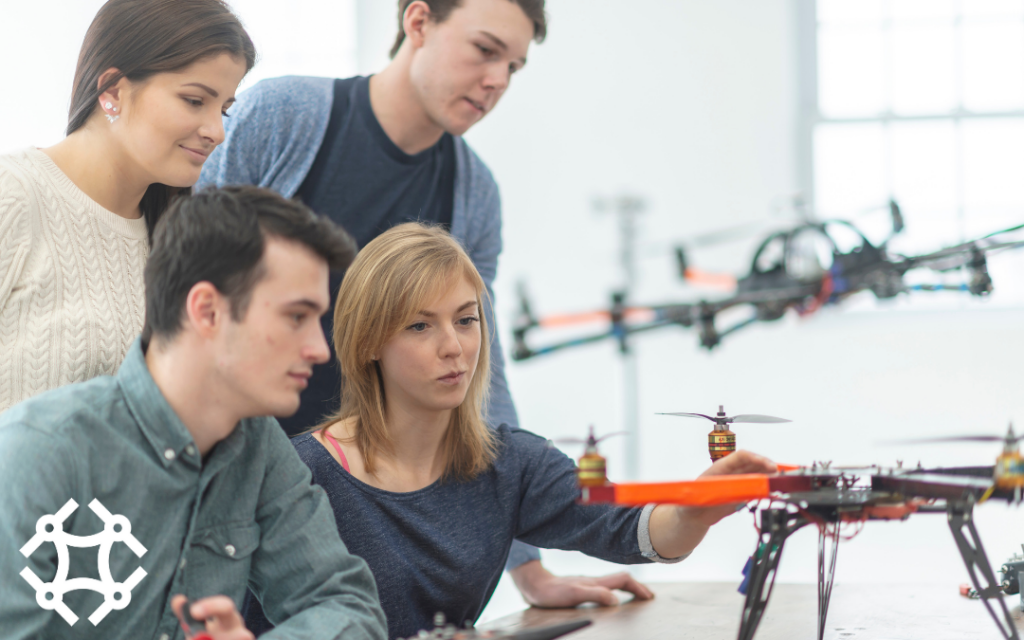How Drones Really Work!
Technology almost seems like magic nowadays. However, by knowing how it works, the exact science is more fascinating than any magic trick. One example is drones. Let’s look at the basics of how drones work.
They’re a Big Fan of Rotors
Rotors are the driving force of a drone. Rotors work similarly to a fan, using a spinning blade to control air. As the rotor pushes the air down, the air pushes up, lifting the drone. As the rotor spins faster, the air pushing it up increases. When it slows down, the drone will begin to descend. When the drone hovers, the rotors move equally to the gravitational force that is trying to push it down, meaning it stays in the air but doesn’t sink down. In other words, the speeds of the rotors can make the drone go up, down, or stay in the air. A drone’s rotors can move at different speeds and directions in order to rotate or move forwards and backward.
The Motors
Drones tend to use brushless motors, which are powered by electricity. These motors have a stator, which is the rotor’s host. The stator uses electromagnetics to make a temporary magnetic field, causing the rotor to spin. Different motors will come in different sizes. If you are custom building one, you may have to consider this. For example, putting the motor of a more affordable WiFi drone into a 4K Follow Me will probably make the Follow Me slightly underpowered. If you swapped them, the WiFi drone would be too overpowered by the motor and this may lead to various problems if not careful.
Controlling Drones
You need a controller to send signals to the drone in order for the drone to know what it’s doing or where it’s going. The drone has a control chip, which will interpret the signals you send to it via the controller. Depending on the drone, it will have different sensors that can indicate where it is. For instance, a GPS drone will have a GPS sensor. Speaking of which, there are other sensors as well that indicate battery life and regulates speeds. The controller uses radio signals to make this all happen. It can be a regular controller, or there are units that can be controlled via a smartphone or similar device, allowing you more freedom.
GPS
Let’s talk about the GPS real fast. This is a module that lets a drone navigate over a long distance. This is the same technology you will find in a car. Using satellites, this module can allow a drone to go back to its home when you are unable to. It also allows the drone to return home should the owner break the connection.
What Powers It All?
The battery. We all have a general idea of how batteries work. They use a charge to supply the machine with power and are essentially how drones work. Quite simple, right? Without it, your drone is just a paperweight. Of course, a drone is a device that demands a lot of power. If you have a large drone, you’re going to need a bigger and stronger battery, as more power is being used to keep itself afloat. Too small of a battery, and you may not get that drone very high off the ground. Not to mention, adding accessories such as Night Lights can weigh it down, so be mindful of that too. As mentioned, sensors can regulate battery life and send signals to the drone to return home if it’s running low. This can prevent an accidental crash. These sensors can also tell the owner about the status of the battery, too. Many drones will use a lithium polymer or LiPo battery, but there are others as well. LiPo batteries are light and powerful, but their lifespan tends to be shorter and they do appear to be more volatile.
There’s a Lot More to It
Of course, we cannot simply explain all the ins and outs of a drone, especially with more advanced units, in a short blog post. This blog is here merely to give you a basic guide of how drones work if you are not someone who is deep in the technicalities of it all. If you have any questions about drones, or you want to see all the possible parts you can buy, visit XPG Drones. They’re the first stop shop if you want to purchase or build a drone in Canada.

